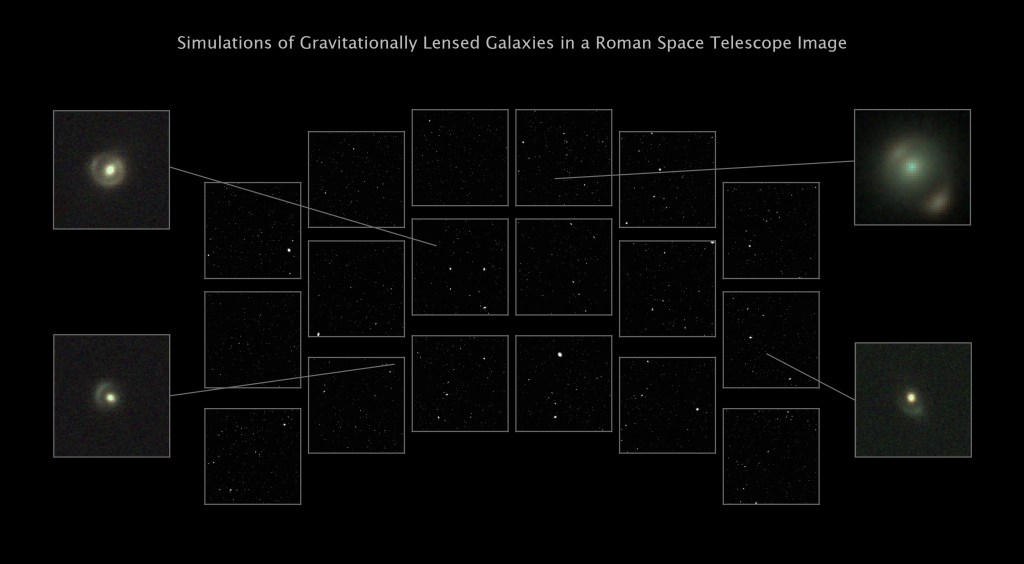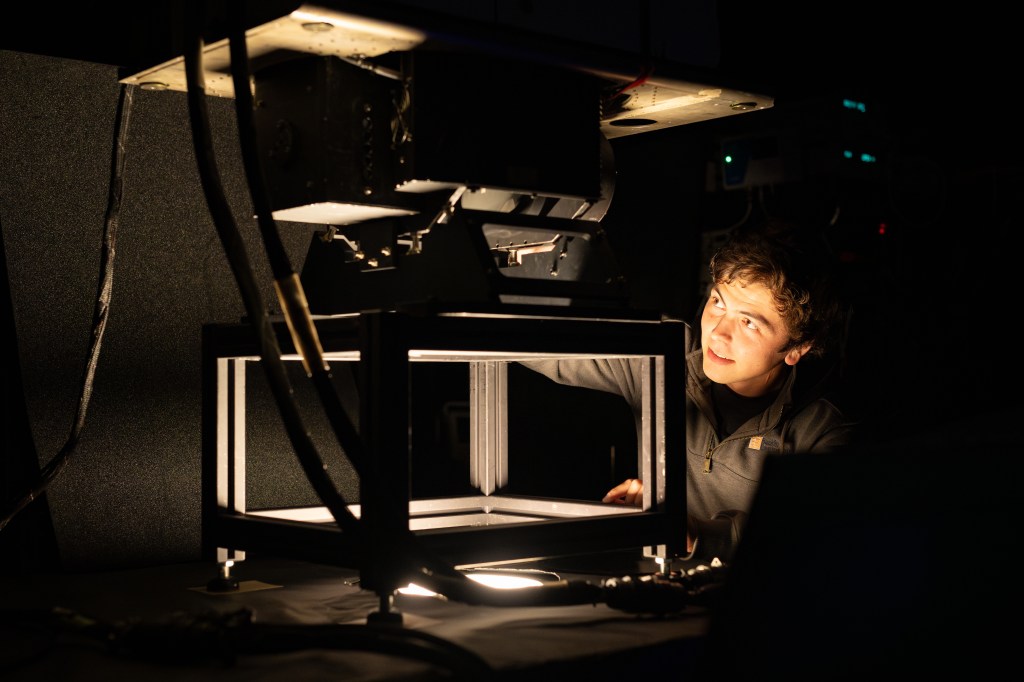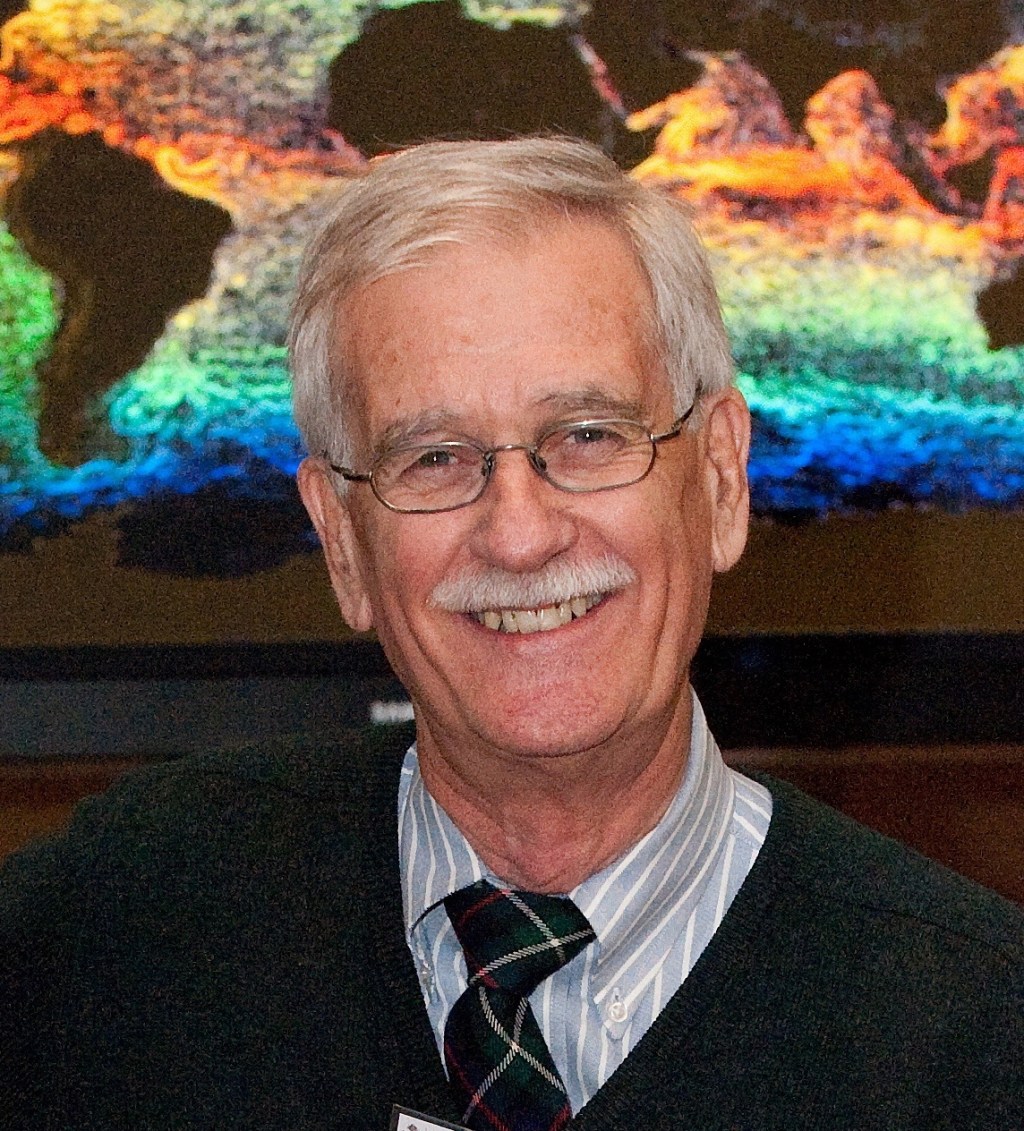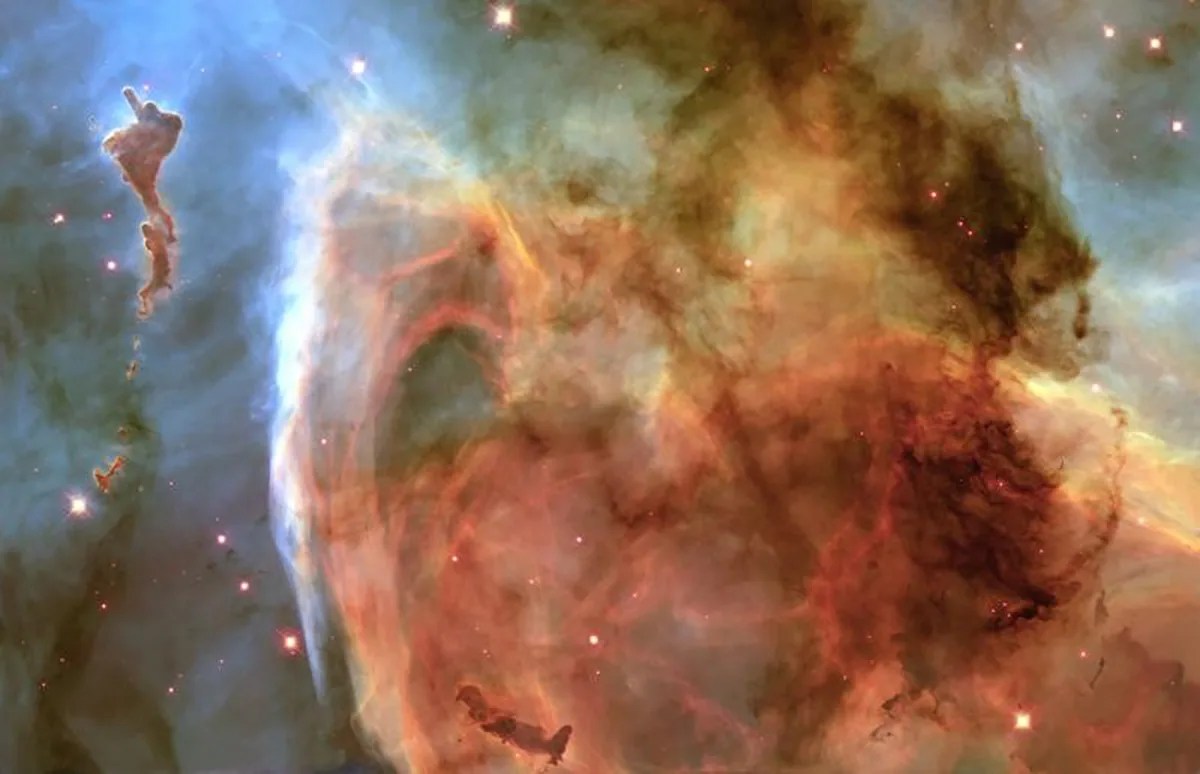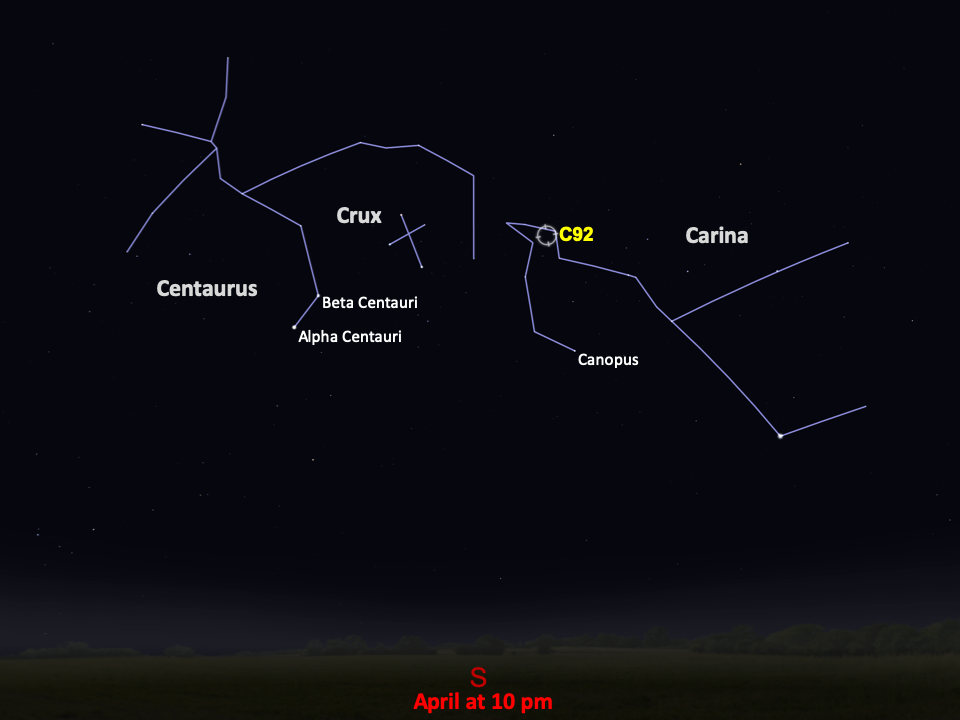Caldwell 92
Better known as the Carina Nebula, Caldwell 92 offers us a wealth of science and beautiful images.
Distance
7,500 light-years
Apparent Magnitude
4.8
constellation
Carina
object type
Emission Nebula
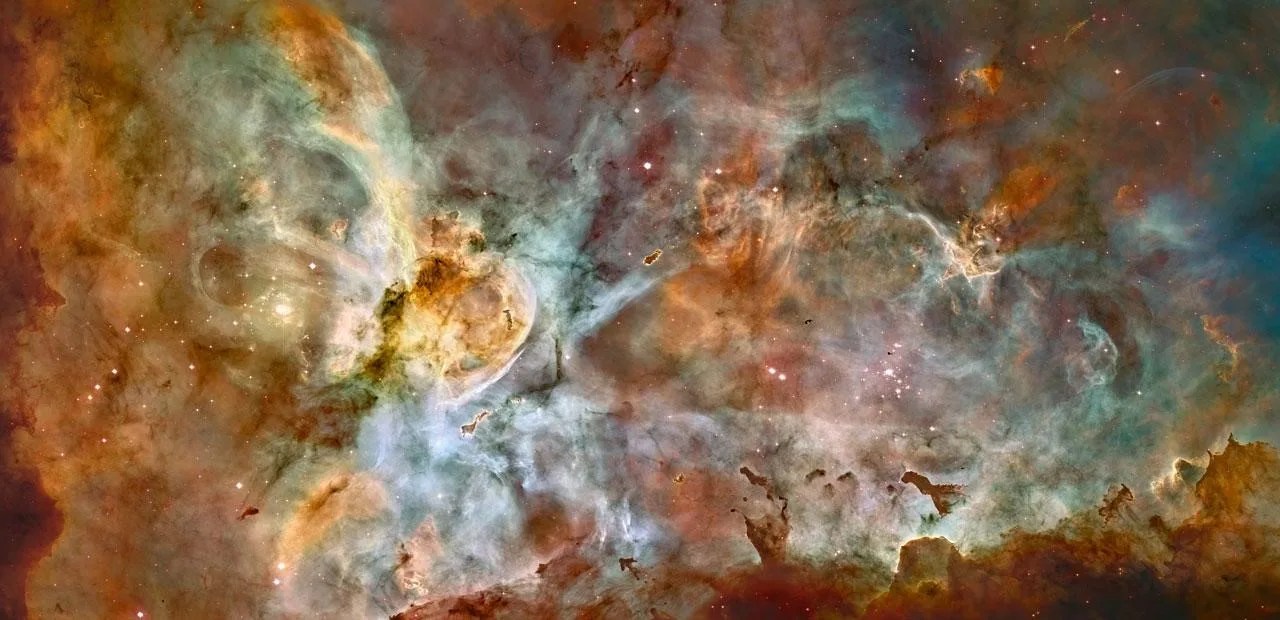
The Carina Nebula lies within our own galaxy, approximately 7,500 light-years away. Near the heart of the nebula lies Eta Carinae – a system of at least two stars, the largest of which (Eta Car A) is around 100 times as massive as the Sun and 5 million times as luminous. Stars of this size are extremely rare; our galaxy is home to hundreds of billions of stars but only tens of them are in the mass range of Eta Car A.
The image above is a mosaic assembled from 48 frames taken with Hubble’s Advanced Camera for Surveys. The Hubble exposures were taken in the light of ionized hydrogen. Color information was added using data taken through three filters at the Cerro Tololo Inter-American Observatory in Chile. Red corresponds to sulfur, green to hydrogen, and blue to oxygen emission.
This view of the Carina Nebula provided astronomers the opportunity to explore the process of star birth at a new level of detail. The hurricane-strength blast of stellar winds and blistering ultraviolet radiation within the nebula is compressing the surrounding walls of cold hydrogen. This is triggering a second stage of star formation. Hubble has also enabled scientists to generate 3D models that reveal never-before-seen features of the interactions between the star system at its heart – Eta Carinae.
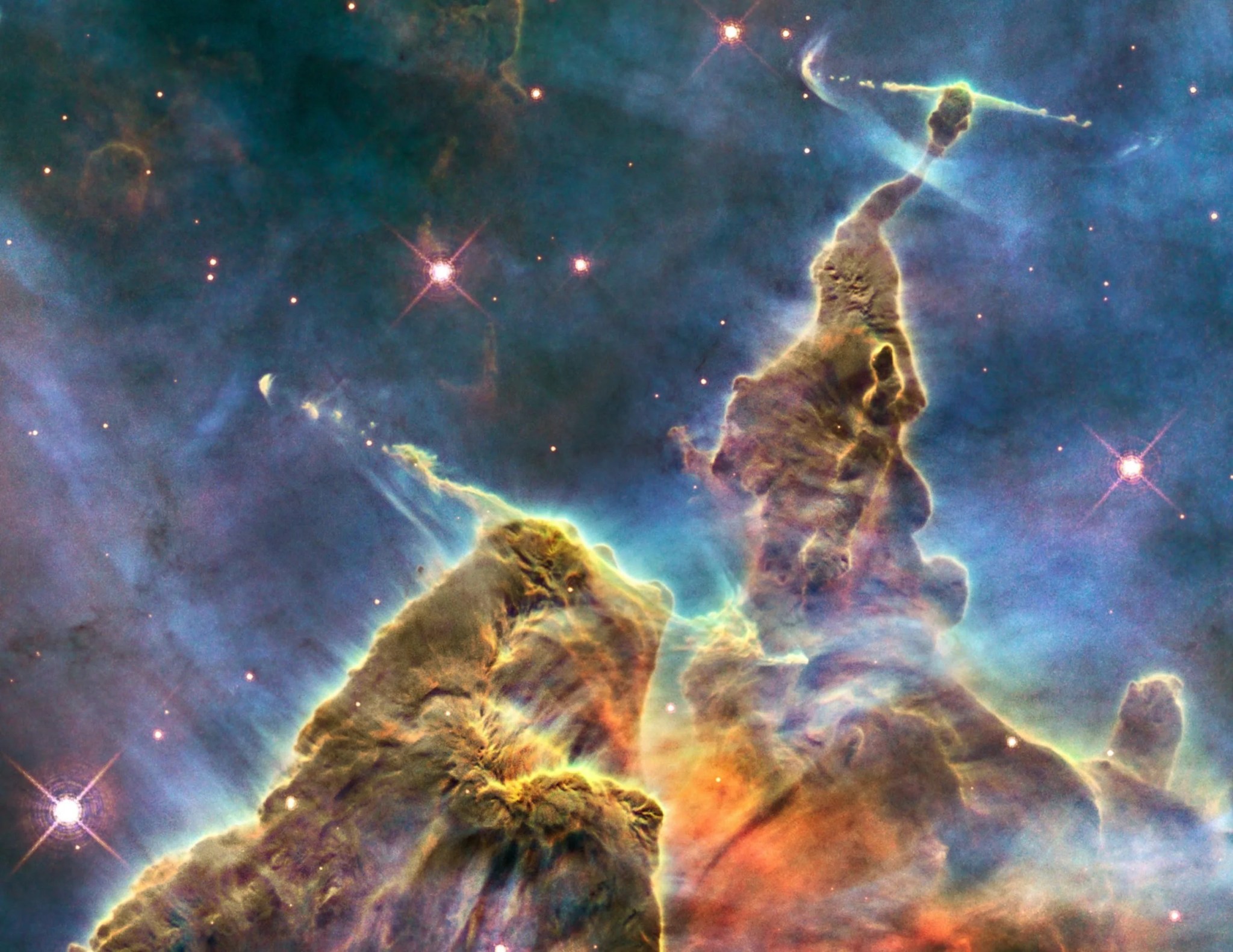
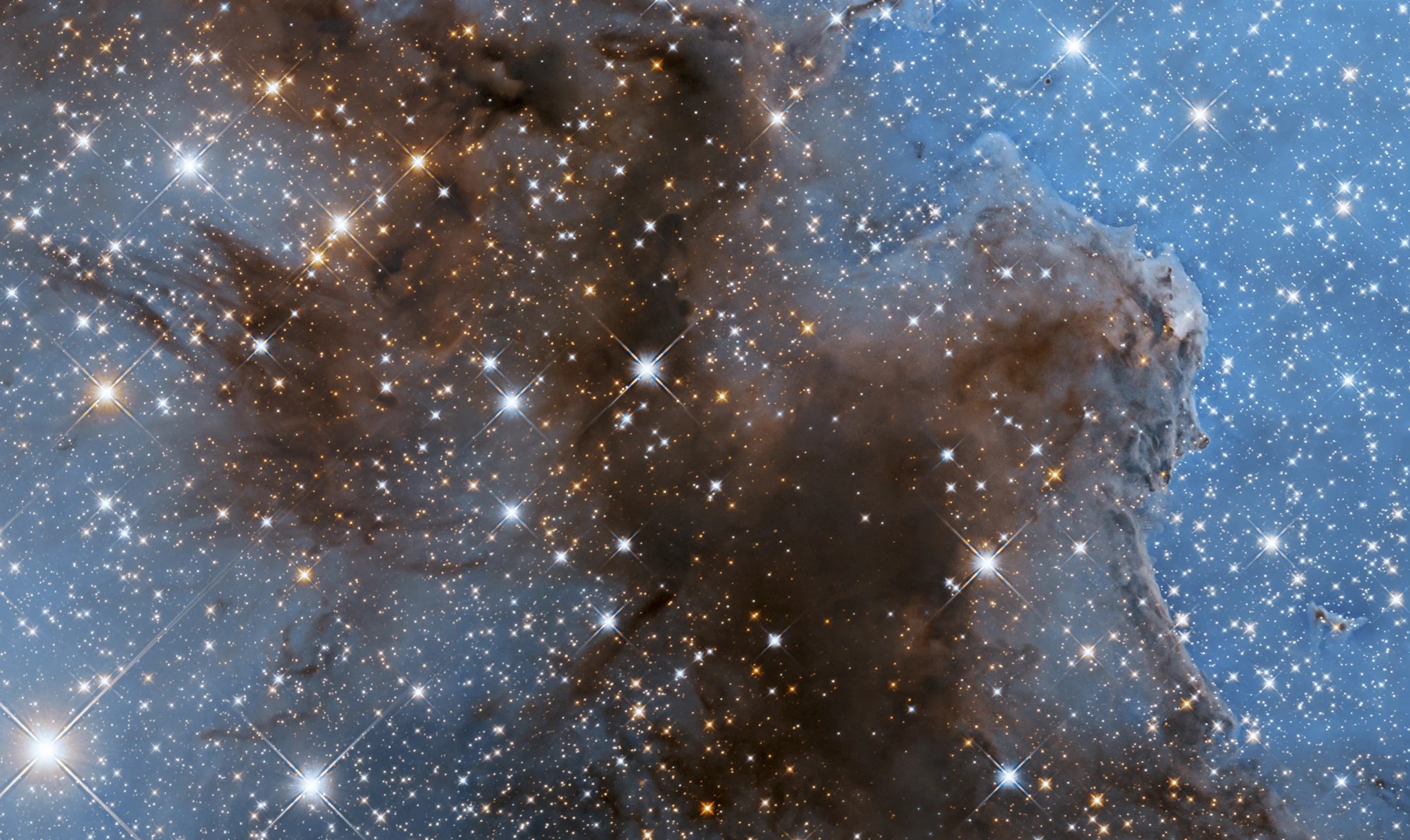
The Carina Nebula was discovered by Nicolas-Louis de Lacaille in 1752 from the Cape of Good Hope. With a magnitude of about 4.8, it is visible in the Carina constellation even with the naked eye. With its large extent, the nebula is an excellent target for binoculars or a small telescope. It is best seen from the Southern Hemisphere in the early autumn, but stargazers in the Northern Hemisphere located near the equator can try looking for it low above the southern horizon in the early spring.
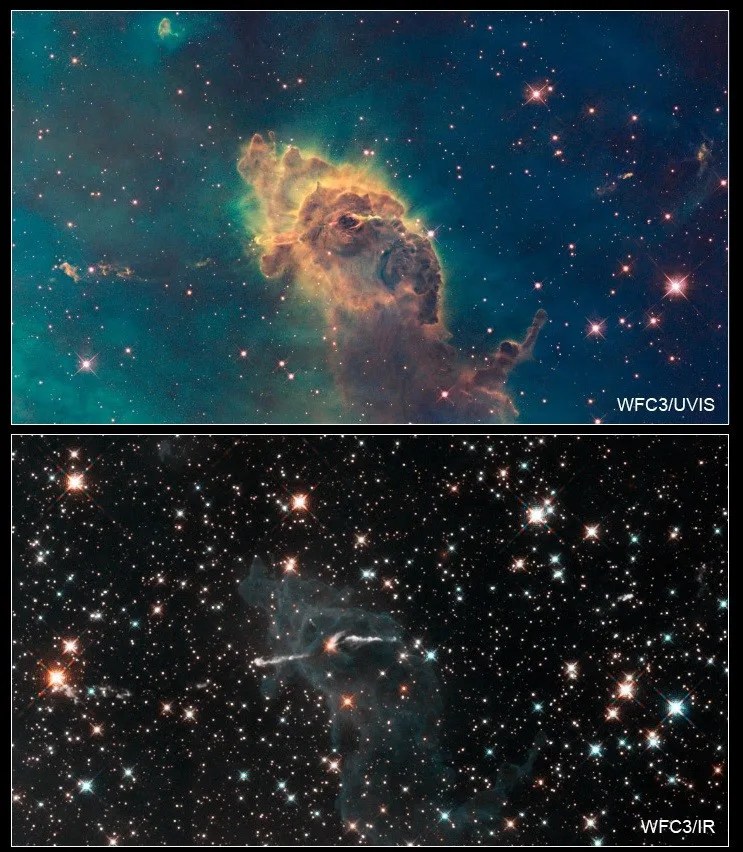
For more information about Hubble’s observations of Caldwell 92, see:
Hubble’s Sparkling New View of the Carina Nebula
Hubble Captures View of ‘Mystic Mountain’
Stars Bursting to Life in the Chaotic Carina Nebula
Cosmic Ice Sculptures: Dust Pillars in the Carina Nebula
Light and Shadow in the Carina Nebula (NGC 3372)
Glossary
Ionization - The process by which particles become electrically charged; radiation from various astronomical sources, such as stars, can charge surrounding gases with electromagnetic radiation, causing these clouds of gas to glow.
Magnitude - The brightness of an astronomical object, represented by a number; bright objects have low numbers on the magnitude scale, while dim objects have high numbers.
Nebula - An interstellar cloud of dust and gas; either a location where new stars are being forged or a cloud of material ejected into space by a dying star.
Explore Hubble's Caldwell Catalog
The following pages contain some of Hubble’s best images of Caldwell objects.

Also known as NGC 188, this group of stars formed from a large cloud of gas making the stars roughly…

This shell of gas is expanding outward, away from the dying star within.

This barred spiral galaxy was first spotted by British astronomer William Herschel in April 1793 in the constellation Draco.

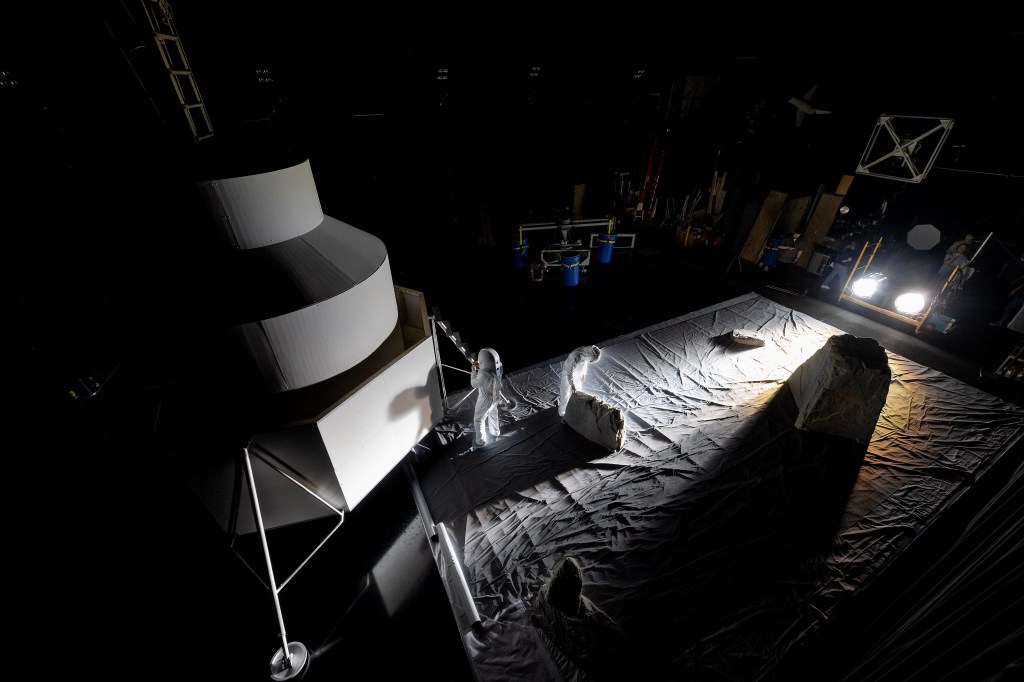









.jpg?w=1024)


